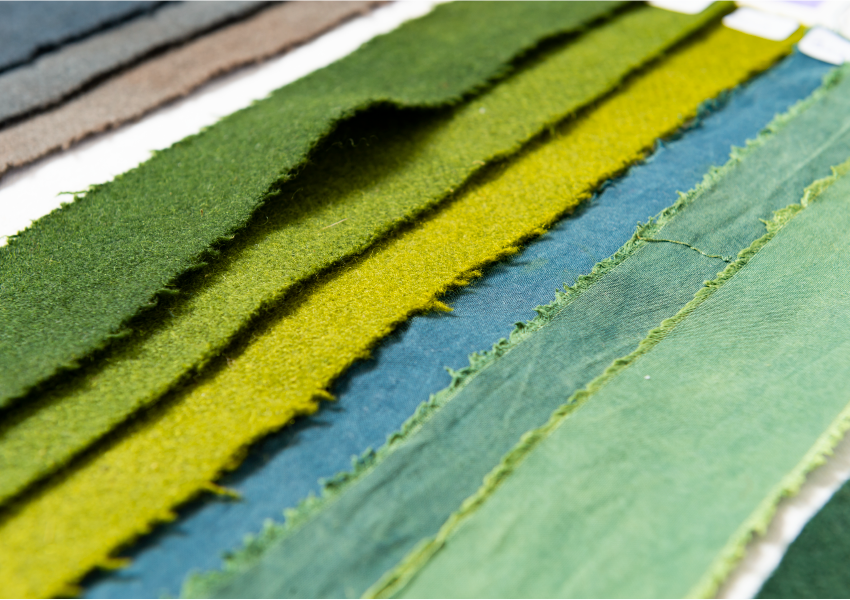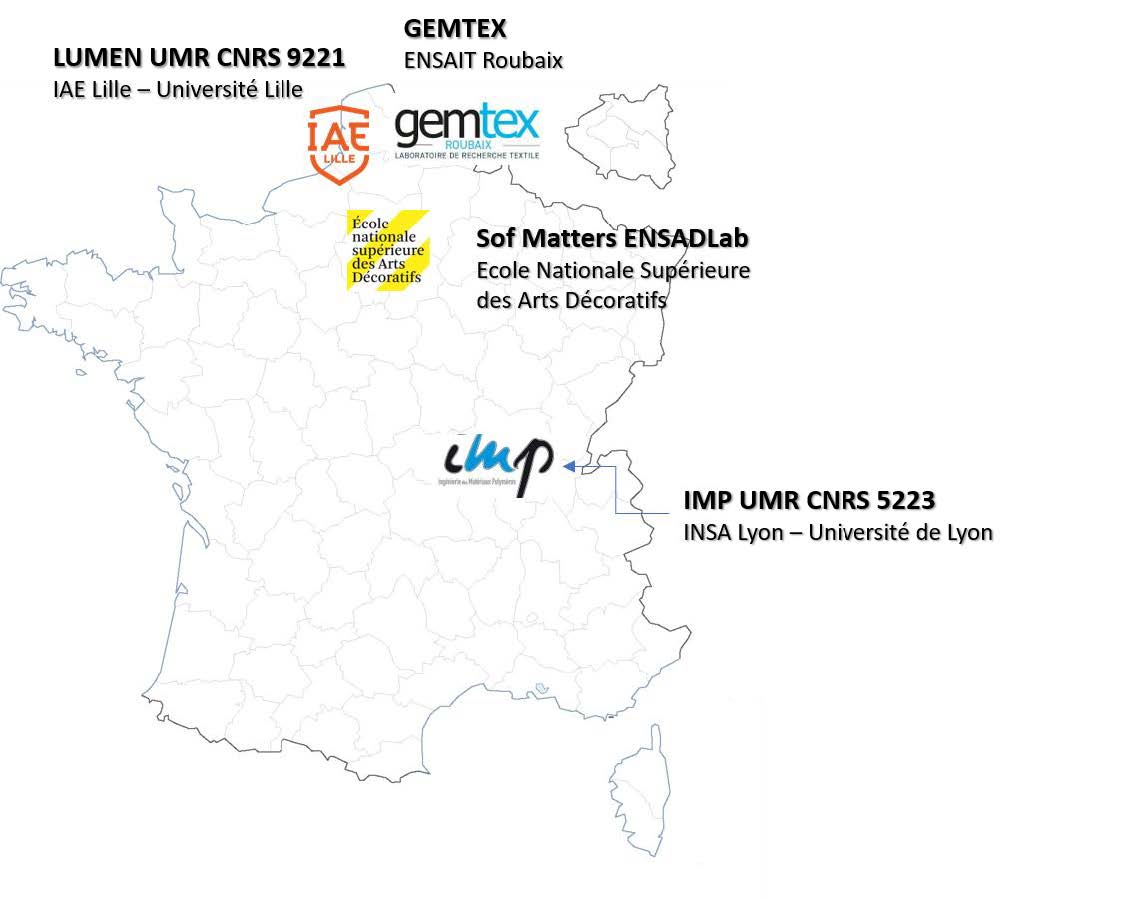
Textiles axis
Excerpt
Project : VLAN, Valorisation des textiles, Recyclage, recyclabilité et réutilisation
Jannick Duchet Rumeau, Professor (IMP – INSA – Université de Lyon)
Contact : jannick.duchet@insa-lyon.fr
Anne Perwuelz, Professor Emeritus (GEMTEX – ENSAIT – Université de Lille)
Contact : anne.perwuelz@ensait.fr
Launch date : 01/02/2023
Reference : ANR-22-PERE-0006
The aim of this project is to propose different solutions so that each textile can have the most optimal end-of-life recovery according to its own technical, aesthetic and emotional characteristics.
The molecular solution consists in developing PET-based Covalent Adaptable Networks (CANs) for the implementation of eco-designed fibers and the recovery of polyester textile waste. These polymers are based on transesterification by reactive extrusion with epoxies in the presence or absence of ionic liquids.
At the level of textile materials, a decision-support tool for recycling choices will be developed. It is based on a detailed analysis of the fabrics contained in the deposits, including their structure, potential recycling routes and degradation. Criteria are developed and associated with descriptions of recycling processes. At the level of textile objects, the project takes into account the intrinsic qualities and values of objects and those perceived by consumers. Echoing the material revalorization processes, a socio-cultural analysis of the mechanisms by which consumers discard textile objects is carried out. This enables us to understand their practices in terms of recycling domestic waste. The textile designer’s point of view makes it necessary to predict its aspects, by characterizing and exploiting them as “material for creation”. This area examines different ways of overcycling, equipping them with creative tools.
Keywords: Textile, PET, vitrimers, deposits, decision support, LCA, overcycling, quality, value, neglect
Tasks
Our researches
Material by Design at molecular scale
Jannick DUCHET RUMEAU
IMPR Lyon
- Enhancing the value of recycled PET
- Designing recyclable PET by introducing dynamic bonds
- Synthesis of dynamic ionic bonds
- Structure-property relationships of eco-designed and recyclable PET
- Feasibility of spinning these polymers
Safe and Sustainable Recycling and transformation processes of textiles
Ludovic KOEHL, GEMTEX, Roubaix
- Mapping of end-of-life textile-clothing recovery routes (point 1)
- Socio-cultural analysis of consumer mechanisms for discarding textile objects (point 2)
- Definitions, prioritization and determination of weighting factors for the criteria used to assess end-of-life textile-clothing recovery routes (point 3)
- Implementation of a decision-support tool on near-optimal recovery routes for textiles-clothing based on the criteria in point 3.
At textile Object Scale, Safe & Sustainable design-led textile upcycling
Jean-François BASSEREAU, ENSADLab Paris
- Predictive pre-model for the evolution of natural dyes as a creative material (first POC)
- Architecture of the chromo chronological color chart as a creation tool in textile design
- Super-cycling experimentation on creative materials (values and sensory qualities) for textile objects to extend their premiere (3 POC projects).
Key numbers
Laboratories
Researchers
Total budget
Consortium
Area1: Development of Covalent Adaptable Networks (CANs) based on recycled PET – Partial depolymerization of PET – Use of PET/recycled PET-CANs blends to produce new textile fibers.
Axis2: Criteria for classifying discarded textiles to identify their recyclability potential – Study of garments abandoned by consumers – Decision-support tool for recovering garments.
Axis3: Illustration of the first law of life extension for textile objects – Tools to help in the creation of super-cycling textile objects – Methodology for life extension for textile objects, clothing and accessories.
Les avantages environnementaux de chaque solution proposée sera évaluée par la méthodologie de l’ACV. Selon la littérature, les bénéfices attendus dépendent non seulement du procédé de recyclage mais aussi du matériau remplacé, de sa nature (monomère, fibre, fil, tissu), de la proportion de remplacement et des opérations textiles évitées. Ces analyses environnementales guideront le choix des différentes filières de valorisation.
De plus, dans ce projet, des propositions seront faites pour prendre en compte la qualité des textiles dans l’ACV.
A PhD student in the field of dynamic chemistry of vitrimers, enabling the generation of networks with reversible links (CANs for Covalent Adaptable Networks) – associated with 2 Masters and a third concerning the spinning of these materials.
A PhD student in the field of sustainable textiles: eco-design for the recyclability of textile materials, life-cycle analysis, and decision-support tools for the recovery of textiles at the end of their life, in association with 2 Masters students.
A post-doctoral fellow in the sociological field of practice theory applied to clothing abandonment mechanisms and recovery practices.
A post-doctoral researcher in the field of design for the overcycling of textile objects, in association with several master’s and bachelor’s students for the production of POC objects.

Project news
No news